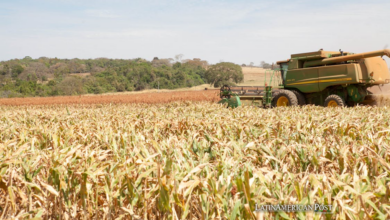How Was The Giant Panda Saved From Extinction?
Although the numbers of these beloved black and white bears are given every 10 years, the scientific community estimates that for this second decade of the century the population would approach 2000 individuals. This figure contrasts with the scarce 1,000 pandas estimated by scientists for 2006.

Photo: Pixabay
LatinAmerican Post | Daniel Alejandro Vergara
Escucha este artículo
Leer en español: ¿Cómo el panda gigante se salvó de la extinción?
The largest population of this species of bears is located in China, in fact it is one of the flagship animals of the Asian country. In 1970, panda populations gradually decreased, which led to their being declared an endangered species in the 1990s. Since 1987, the Chinese government has made efforts to protect more than 50% of its habitats and established some laws against poaching and illegal trade.
In addition to the shelter that Chinese law has given these mammals, there are other causes for the growth of the panda population, among them the conservation effort of different institutions. In 2021, the government announced the creation of a 27,000 square kilometer national park, which will function as a sanctuary for various species. This new protected area will connect other forest reserves located in the provinces of Sichuan, Gansu and Shanxxi, which are home to various groups of panda bears.
With the creation of this sanctuary, the environmental authorities must face several challenges, one of the main ones is related to other animals that can affect their habitat and influence their diet. One of these is the Sichuan takine, a mammal that can weigh more than 300 kilos and that feeds on the bark of trees that pandas need to live.
In an interview for National Geographic, Diao Kunpeng, founder of Sichuan Qingye Ecology, an NGO that supports nature reserves, stated that: “The takine strip the bark off trees to eat, leaving the trunks exposed to lethal fungal and insect infections. This changes the physiognomy of the forest in which there end up being fewer and fewer large trees and more shrubby flora. Pandas like bamboo forests with large trees that they use to give birth and raise their cubs."
Another species that can present a great challenge as it has no natural predator is the North China boar. These mammals, like pandas, base their diet on bamboo, in fact, it has been shown that bears do not usually frequent places where wild boars are located. Having a smaller population, the panda faces a new challenge at the food level, it is necessary to remember that 99% of the diet of these bears is based on bamboo.
One of the most important keys to the conservation of this species is captive breeding, according to National Geographic magazine, currently, about 633 pandas have been bred in this condition. In fact, the Chengdu center is located in the Sichuan province, one of the most fundamental recovery sites in this fight for the conservation of the species, about 215 panda bears have grown up there.
Captive breeding in various parts of the world has contributed to the progressive increase in panda species. For example, thanks to this method and in some cases artificial insemination, in Madrid, Spain, there is one of the largest families of this species in Europe, with 5 individuals.
The inter-institutional effort of thousands of people has allowed the panda to be removed from the list of endangered species in 2016. In Madrid, according to an interview given by the city zoo to National Geographic, the employees dedicate up to 24 hours (during mating season) to the investigation and care of each one of the pandas. In China, more than 100,000 rangers are distributed throughout nature reserves to track, monitor, and protect these mammals, which are not only environmentally important for the planet's diversity, but have also historically represented China and world diplomacy.
The panda population is expected to continue to grow over the years so that many more bears can come out to live in the forests and their natural habitats.




